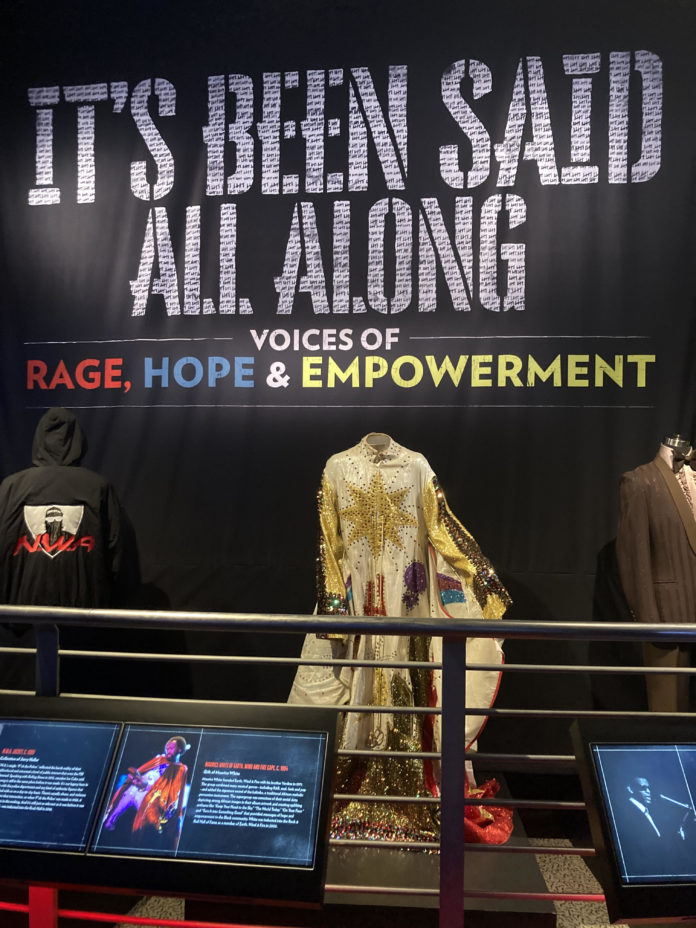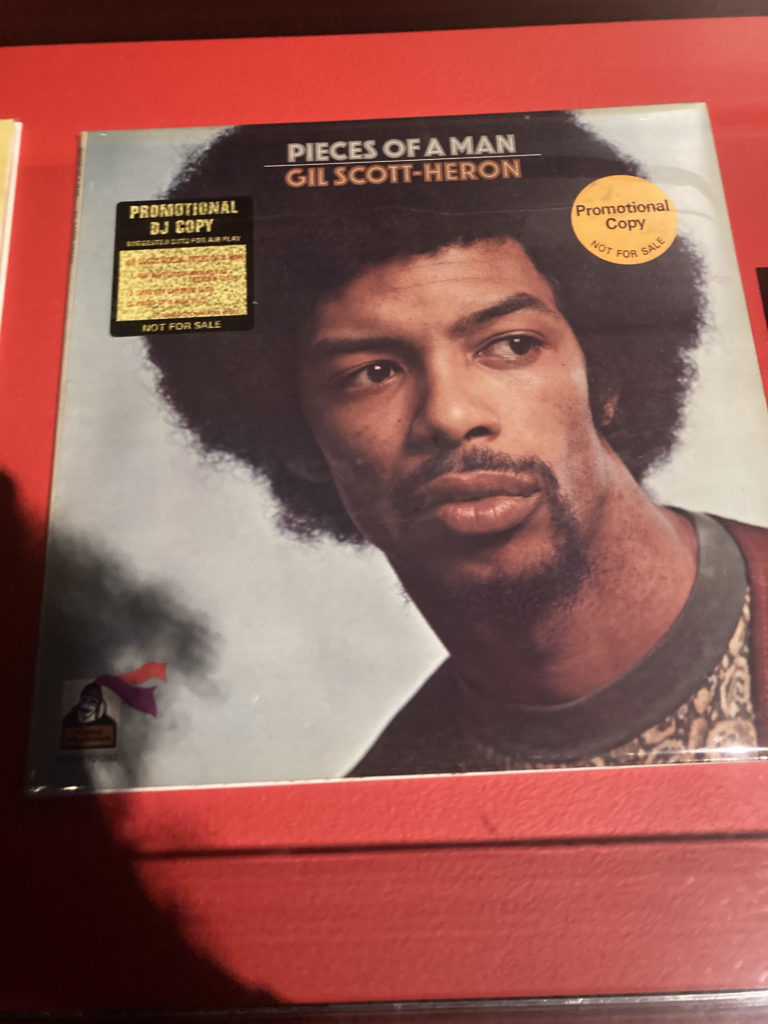My Tour of New Rock and Roll Hall of Fame Social Justice Exhibit ”It’s Been Said Along with Voices of Rage, Hope and Empowerment”
By Nicholette Marbley
With the weather heating up and unemployment numbers dropping, Ohioans have one thing on their minds, having fun. One thing I’m looking forward to is the new museum exhibits. My trip to the Rock Hall was one of the best experiences I have had all year. The director of cultural affairs, Nwaka Onwusa, gave me an exclusive tour of this quintessential exhibit.
For those of you who are not familiar with the Rock and Roll Hall of Fame, the building sits on 1100 E. 9th St., Cleveland, OH 44114. The famous museum is the reason why David Bowie, a world-renowned musician and Rock, and Roll inductee, held his first US tour in the city of Cleveland. The museum had a staggering 560,000 visitors last year and over 600,000 visitors in 2018. This collection of remarkable, eye-catching artifacts, is the first exhibit located to your right as soon as you get off the escalator. This fastidious display of historical items mixed with a collection of resonant sounds in the background will give you feelings of nostalgia and inspiration. The layout is in the order of the title. The first set of items on display are symbolized rage, following rage is hope, and last is empowerment. At the end of the exhibition is a 5-minute collection of artists that aren’t shown on the screen but still play a vital role in the message of the exhibit. There are also two powerful stand-alone pieces in the exhibition.
Before I go into details of the artifacts on display, I want to discuss the charismatic and amiable curator from Compton, CA, Nwaka Onwusa. So many reviews are written about the exhibits but do not mention the man or woman behind them. Onwusa previously worked at the Grammy Museum in Los Angeles, California, for ten years. She has researched, developed, and curated more than 20 exhibits. ”The Legends of Motown,” ”The Taylor Swift Experience,” and ”Soul, R&B, & Funk Photographs 1972-1982: A Love Better To The Music” are just a few of her meticulous and phenomenal pieces of work. The Ceo of the Rock and Roll Hall of Fame, Greg Harris, had this to say about the gregarious musical historian, ”When this new position became open, Nwaka was one of the first people we thought of.” Onwusa was appointed director of cultural affairs for the Rock and Roll Hall of Fame. in 2019. On July 24, Nwaka gave me insight into her powerful and electrifying piece of work.

When I asked her about her inspiration for the title, she had this to say, ”We wanted to highlight their stories, their narratives, and everything their music has done for social justice and equality. This has been the agenda of the Rock and Roll Hall of Fame ever since we have been open. This is just a focused collection of the black narrative. We wanted to amplify the stories that we have already told here at the Rock and Roll Hall of Fame and felt like this is the perfect time to showcase the music that stands up to racial injustice and inequality.” There is a quote by Nina Simone on the wall of the exhibit that reads, ”You can’t help it. An artist must reflect the times.” I am grateful that that quote lives on to this day.
I asked her to give me an educational tour along the strip of relics starting with rage. I have chosen two pieces from each display to discuss. My two favorite pieces of the rage display we’re the Fantastic Negrito Guitar and a photo of Rage Against The Machine. The guitar on screen, played the famous song ”In The Pines,” a song about a black mother losing her child to gun violence. The Rage Against the Machine Photo showcases Tom Morello at one of many controversial rallies. As I’m walking through taking pictures, Onwusa explains, ”Rage holds us accountable. It may not be happening in your neighborhood, but this is a cry of what is happening in their community.” The Empowerment section of the exhibit features a photo of Ray Charles and the ”Pieces of a Man” Gil Scott Album. Ray Charles is critical to this exhibit because he was an avid fighter of segregation and paid the fine and fee to have the crowd integrated. Gil Scott is well known for his ”Revolution Will Not Be Televised ” lyrics. The song speaks on hiding behind trivial matters to mask essential issues such as racial inequality. The last segment of the exhibit shares visions of hope. Nwaka wanted to showcase the global impact of lyrics and what it can do. Hope is the future. The two main items that caught my eye in this showcase are the ”Let Go” lyrics by D. Smoke and the lyrics of ”Brother” by Miles Mosely.”Let Go” was written after the death of George Floyd and condemns police brutality, and the song ”Brother” speaks about fighting through hardship. The two stand-alone pieces in the exhibit are Bob Marley’s beanie and Issacs Hayes’ best that he wore at the Watts Festival, and the saxophone is on display for artistic purposes.
My favorite relic out of the exhibition is the cape of Maurice White. The Earth, Wind and Fire member wore the cape in numerous concerts and appearances. Onwusa agreed, adding, ”It’s vibrant and brings all of the elements together.” The exhibition is on display for a year. There is a virtual exhibit premiering in August that features all artists on display and many more. Onwusa’s ebullient and refreshing attitude made my visit ten times more enjoyable and is the epitome of what a curator should be. The coronavirus has caused the museum to change some policies so everyone can stay healthy. Procedures at the Rock Hall will include timed tickets, limited admission, temperature checks, and wearing masks along with social distancing. You can read the current visitor policy at https://www.rockhall.com/visitor-policy. I encourage everyone to take a trip to the rock hall and see this beautiful historical display. This is the perfect time to celebrate diversity and encourage everyone to love one another.




























